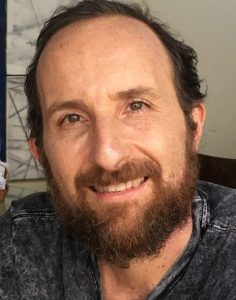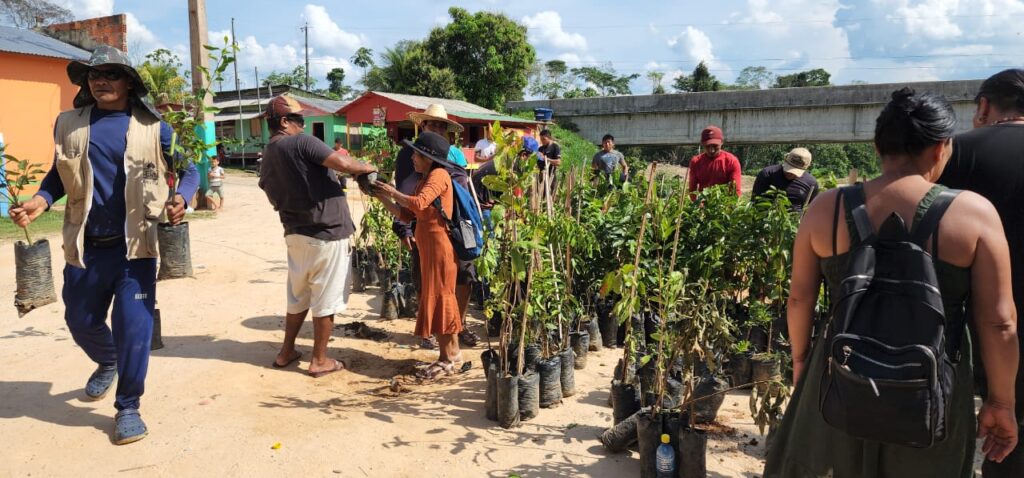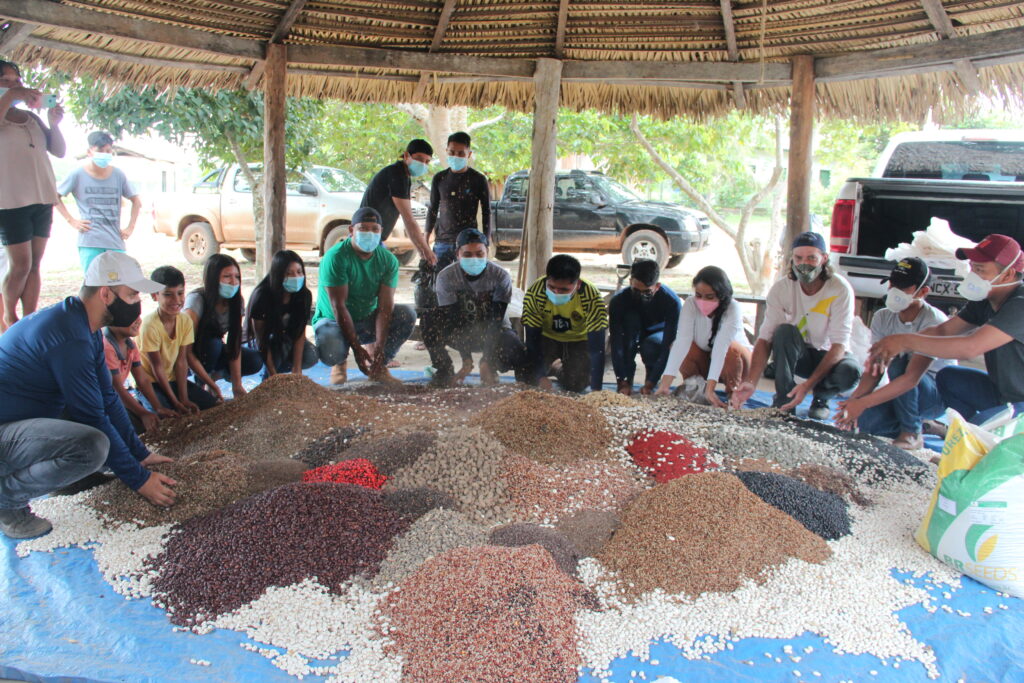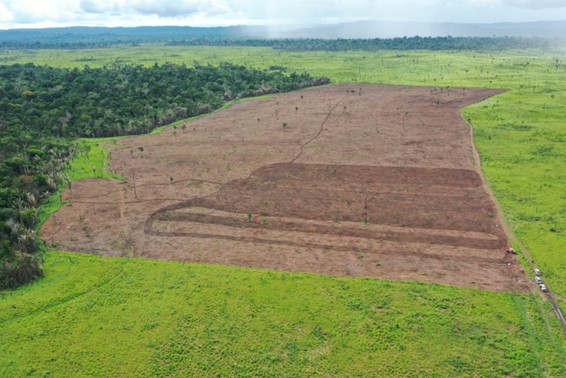Last month, US President Joe Biden pledged $500 million to Brazil’s Amazon Fund to halt deforestation in Brazil, calling forests “the key to our future.” After losing an area of forest greater than the size of Denmark during the Bolsonaro administration, Brazil’s new President, Luiz Inácio Lula da Silva, has made restoring the Amazon a major priority of his administration, alongside growing Brazil’s bioeconomy.
Brazil has committed to restoring 12 million hectares by 2030. Initiative 20×20 estimates that around 140 million hectares of land are degraded in Brazil. The Amazon biome makes up about half of Brazil’s land area. That’s about 70 million hectares that will need to be replanted to restore the Brazilian Amazon — an area almost double the size of Germany. Forget for a moment the labor or the money needed for such a monumental project. Think just about how many trees Brazil is going to need. Where are those seeds and seedlings going to come from?

We caught up with Marcio Halla, Forest Trends’ Brazil-based Local Economic Initiatives Lead, to talk about how to replant the Amazon and accelerate Brazil’s bioeconomy at the same time (more on our bioeconomy work here). Marcio oversees our work demonstrating the business model for value chains for seeds and seedlings produced by indigenous communities. He talked about why indigenous peoples are a perfect fit to supply Brazil’s replanting needs, how to scale successful models, and why this won’t look like anything like a traditional tree-planting campaign.
How is Brazil going to source the seeds or seedlings it needs to restore the Amazon? This sounds like an incredible logistics challenge.
If we take the figure of 70 million hectares ready for replanting in the Brazilian Amazon, we will need approximately seven billion pounds of seeds to meet replanting demands for those areas alone.[1] It is essential that the species used for efforts like this are 1) native and 2) that we plant biodiverse mixes of them. Plantation-style projects can be fast ways to sequester carbon or check a box on paper that trees were planted, but there tends to be an emphasis on quantity rather than quality. Plantations are simply not effective ways to increase biodiversity, or meet other goals like food and water security, valuing traditional knowledge, or improving local livelihoods.
The only way to get the seeds needed for massive replanting efforts is to put a strong network in place. We need an Amazon region-wide network of indigenous and local seed collectors who can supply plant nurseries and replanting projects.
We are hearing more recognition of indigenous peoples as the planet’s best stewards of nature, and holders of valuable knowledge. Here, they are literally the holders of the seeds, the raw material, to rehabilitate the Amazon Forest.
There is a big opportunity here to grow Brazil’s bioeconomy in an inclusive way. Paying indigenous peoples and other local communities for the seeds they collect from their lands is a way to value traditional knowledge and creates sustainable livelihoods for communities, especially women and youth. We have an emphasis on agroforestry species, so communities can either sell the forest products and seeds or use them themselves. In this economic model, each community can become a self-sustaining system that also contributes to the larger regional network.
We’ve partnered with the Zoró, the Paiter Suruí, and 14 other indigenous peoples to plant agroforestry systems over 145 hectares across eight indigenous territories. We’re doing that work in partnership with Ecoporé, the Xingu Seeds Network Association, and the Arbor Day Foundation. We have planted well over 520,000 seedlings and almost 15,000 pounds of seeds representing 66 native species.
We also pay these communities for their seeds to plant in other areas. In some cases, that’s been literal “seed money” to create a more formal business plan for seed collection. We use satellite imaging to monitor reforestation in each community and train them to do the same, especially in territories where replanted patches of land may be far apart.
Helping communities strengthen their capacity to develop strong, forest-based initiatives of their choosing is part of a larger, integrated approach our Communities and Territorial Governance Initiative has taken for almost twenty years by supporting political, economic, and cultural governance. Governance, simply put, means the ability of a community to manage their lands, resources, food security, and healthcare in ways that align with their cultures and worldviews. Our long-successful Capacity Building Program on Indigenous Territorial Governance (Español aquí) and strategies to grow the Amazon bioeconomy are a few of our resources available to local and indigenous communities through one-stop support systems like the Territorial Governance Facility.

What would need to happen from a policy and investment standpoint to increase the pace of ecological restoration of the Amazon?
There is a law already on the books in Brazil that could drive this. The Rural Environmental Registry (CAR in Portuguese) requires rural landowner to register their land and land use practices on their property, such as forest, pasture, or cropland. There is a Minimum Legal Reserve for each biome in Brazil that dictates the minimum amount of forest cover that must be present and is enforced using satellite imagery.
For example, in the Amazon biome, the Forestry Code requires 80 percent forest conservation and allows 20 percent for use. If a landowner is not conserving 80 percent, they are required to have a forest restoration plan to be eligible for funding for agricultural activities and to benefit from other public policies.
Enforcing the CAR is the challenge. All data are self-declared by landowners. Under the Bolsonaro administration, the regulations became relaxed, and land grabbers could use self-declared land ownership under the CAR to encroach on indigenous territories.
Under the new Lula administration, and with Marina Silva leading the Ministry of the Environment, there is a renewed sense of hope for enforcing the CAR. If enforced as intended, the CAR is an incredible tool to promote forest protection and restoration, conserve biodiversity, and protect indigenous territories.
We are seeing more interest from international donors in bioeconomy models to restore the Amazon and other biomes, such as the Atlantic Rainforest in Brazil, but much more investment is needed. Cooperation among local and international stakeholders to develop financial strategies to promote restoration are critical. These strategies must recognize and value the roles of local and indigenous communities, who own much of the land where restoration efforts and seed value chains begin.
I understand the planting itself looks a little different from the image of tree planting some of us have in our heads. Can you tell us about that? Once you have the seeds and seedlings you need, then what do you do?

In our work with indigenous communities in Brazil, we restore degraded areas and promote the enrichment of productive areas using a mix of the muvuca method and planting seedlings in agroforestry systems.
Muvuca is a direct seeding method that works really well for the Amazon Forest. You can spread it by hand or using farm equipment. We create a specialized muvuca seed mix for each area where we’re working, with a mix of fast-growing species and species like shrubs and trees that emerge in the medium and long term as part of a mature forest.
The idea is that some seeds will promptly germinate as pioneers, and others will lay dormant, waiting for ideal conditions. In this way, seed mixes help replenish the “seed bank” of a degraded landscape with native species. Seed banks are present in the soil of most ecosystems; it’s nature’s way of storing seeds until conditions are ideal for them to germinate, often for decades at a time. Spreading a great diversity of seed species, some of which may not sprout for years to come, is part of the long-term intention we need to adopt if we hope to restore biodiverse forests.
Communities are also using seedlings for restoration. They’re planting agroforestry systems using mixes of species, such as legumes to act as green fertilizer; fruits such as banana, papaya, guava, and cashew to strengthen food security; species providing market opportunities, such as cacao, açaí, brazil nuts and pupunha (a native palm tree); and tree species that can be used in the future for sustainable timber products. There are also plants included in agroforestry systems that are used specifically by women as raw material for their artisanal products.
What’s the benefit of muvuca, instead of planting established seedlings?
Large areas can be planted more quickly using muvuca. Seedlings are a way to plant something that is “farther along,” but they need to be individually planted and cared for – a lot more hours and labor than spreading handfuls of seeds over the ground, with the possibility of mechanically sowing the seeds directly to the soil. Planting seedlings can be a great strategy for some locations and a powerful complement to the muvuca method in others. In some places, it won’t be realistic to replant with seedlings at all.
Muvuca is much more cost effective; the average cost of planting a tree in Brazil is US$4, considering all the costs involved in the production and planting of seedlings. This is very high, especially when you consider the sheer number of plants needed to replant 70 million hectares – it would cost well over US$6 billion.[2] It would cost US$100 billion for Brazil to meet its commitment to replant 12 million hectares.
In our experience, the volume of seeds needed for one muvuca planting would take at least ten years for a single nursery to produce on its own. In one project area on the Zoró indigenous territory in Brazil, we planted 140 hectares with 14,000 pounds of seeds. We expect between 10,000 and 12,000 seeds to sprout per hectare in the first six to eight months. The estimated end result would be a restored forest area with about 5,000 trees per hectare. For comparison, one of the biggest nurseries in the Amazon region where we work produces about 600,000 seedlings per year, enough to restore an average of 300 hectares per year. To restore 70 million hectares under this model with seedlings, we would need well over 200,000 such nurseries.
The bottom line is that we don’t have time to grow everything we’ll need in nurseries before we start replanting forests.

[1] Calculated from our team’s planting procedures: it takes about 100 pounds of seeds to replant 1 hectare (ha) using the muvuca method. 100 pounds/ha * 70M ha = 7B lbs
[2] Using our team’s estimate of 2,000 seedlings per hectare
Keep reading:
Forest-based Value Chains: A New Bioeconomy for the Amazon Forest
Dos Territórios Indígenas aos Mercados
The “Amazon Strategy” – How to Build Resilient Supply Chains and Food Systems post-Pandemic
An Amazon Bioeconomy is a path forward for Brazil
Viewpoints showcases expert analysis and commentary from the Forest Trends team.
Connect with us on Facebook and Twitter to follow our latest work.
